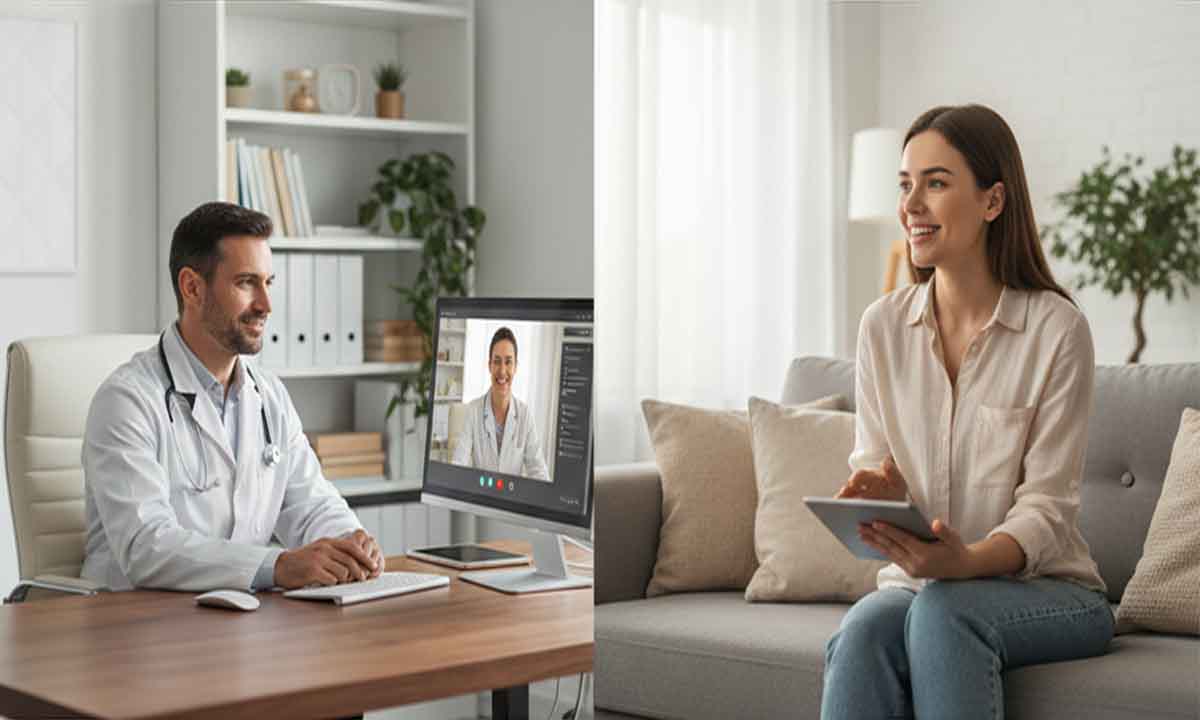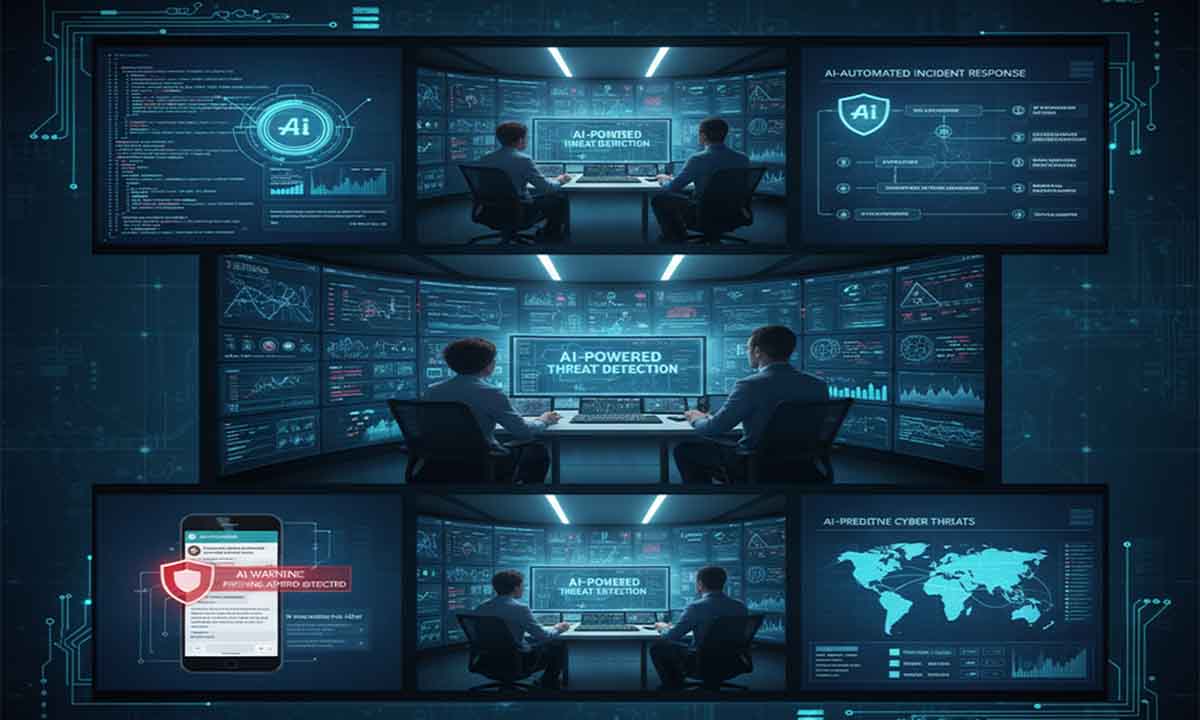
Healthcare continues to evolve, shaped by the growing influence of technology. For many people, health is deeply personal, and how medical care is delivered affects lives in direct and meaningful ways. What was once a distant concept digital innovation trends has become a global reality. From online consultations to complex surgical operations assisted by intelligent systems, technology is redefining how healthcare works. These advancements are opening new pathways toward a healthier, more connected future for all.
Quick Overview:
This article explores the key digital shifts transforming healthcare worldwide. It highlights how telemedicine bridges distance between patients and doctors, how Artificial Intelligence (AI) accelerates diagnosis and drug discovery, and how Big Data improves population health understanding. It also discusses wearable devices, blockchain for secure data exchange, precision medicine, robotics in surgery, and the growing use of Virtual and Augmented Reality in medical education and therapy.
Digital Transformation in Global Healthcare
Around the world, digital innovation is reshaping healthcare faster than any other industry. By understanding how emerging technologies impact various sectors, we can better appreciate how they not only improve efficiency but also extend medical access to underserved regions. In many countries, the gap between healthcare availability and patient need remains wide. Digital solutions offer the opportunity to narrow that gap, bringing equitable, cost-effective, and personalized healthcare closer to reality.
Over the past decade, we have witnessed rapid progress from online appointment systems to AI algorithms that identify diseases earlier than traditional methods. These developments are redefining what modern healthcare means and how it reaches people across borders.
Telemedicine: Care Without Boundaries
Telemedicine, or telehealth, has become one of the most impactful changes in digital healthcare. Through video consultations, phone calls, and secure messaging, patients can seek medical advice from the comfort of their homes. This approach proved essential during the pandemic, allowing continued care when physical visits were restricted.
For instance, a patient in a remote community can now consult a specialist in another country through a virtual platform. This global accessibility eliminates travel barriers and helps those with limited mobility or chronic conditions maintain regular check-ups. Additionally, remote consultations help reduce infection risks in hospitals and save both time and transportation costs.
Today’s telemedicine platforms integrate diagnostic tools that transmit vital data such as blood pressure, heart rate, and oxygen levels directly to physicians. This level of connectivity makes healthcare not only more efficient but also more proactive.
Artificial Intelligence and Machine Learning: Smarter Decisions in Medicine
Artificial Intelligence (AI) and Machine Learning (ML) are transforming how medical data is analyzed and applied. These technologies process massive volumes of information faster and more accurately than humans can. In diagnostics, AI algorithms can interpret X-rays, MRIs, and CT scans with remarkable precision sometimes identifying diseases at earlier stages than manual evaluation would allow.
For example, AI systems can detect early signs of cancer or diabetic retinopathy by analyzing medical images, improving survival rates through early intervention. In drug discovery, AI accelerates research by predicting molecular behavior and potential effectiveness, significantly reducing development costs and time.
Personalized treatment is another vital benefit. By studying genetic data, lifestyle habits, and medical history, AI can recommend therapies tailored to individual patients. This approach increases treatment success rates and minimizes unwanted side effects. As AI systems continue to learn, they empower doctors to make data-driven decisions that improve patient outcomes globally.
Wearable Technology and Remote Monitoring
Wearable devices such as smartwatches and fitness trackers are changing how individuals monitor their well-being. These tools record vital metrics like heart rate, sleep quality, and physical activity throughout the day. The data they collect can be shared securely with healthcare professionals for analysis and long-term monitoring.
Remote patient monitoring (RPM) further enhances independence for individuals managing chronic illnesses. A diabetic patient, for instance, can use a connected glucose monitor that automatically transmits readings to their physician. When irregular patterns appear, doctors can respond immediately to prevent complications.
This type of continuous monitoring reduces hospital visits, lowers healthcare costs, and provides families peace of mind knowing their loved ones are being cared for even at home. The future of wearables points toward even greater precision, integrating biosensors capable of detecting early signs of disease before symptoms appear.
Big Data: Understanding Global Health Patterns
Healthcare generates enormous amounts of data every day from electronic records to genetic information and public health databases. Big Data analytics enables experts to identify patterns and predict trends that traditional systems could not detect.
By examining these datasets, health authorities can determine which regions face higher disease risks and allocate resources accordingly. Predictive models can forecast potential outbreaks, guide vaccine distribution, and measure the effectiveness of health interventions.
This data-driven approach not only strengthens public health strategies but also supports preventive care, shifting focus from treatment to long-term wellness. Countries investing in Big Data infrastructure are already seeing improved responsiveness and efficiency in their healthcare systems.
Blockchain: Protecting Patient Information
Data security and privacy remain among the most pressing concerns in modern healthcare. Blockchain technology offers a promising safeguard. Known for its role in securing digital transactions, blockchain ensures that electronic health records (EHRs) are stored in a tamper-proof and transparent system.
Each record is encrypted and linked to the previous one, creating an unalterable chain that requires verification for any modification. This gives patients greater control over who accesses their information and when.
A patient can, for example, authorize a specialist to review their medical history for a set period, ensuring both accessibility and privacy. Blockchain also streamlines the sharing of records across hospitals and countries, reducing duplication and administrative errors while maintaining trust in data accuracy.
Precision Medicine and Genomics: Tailoring Treatment for Individuals
Precision medicine represents a major shift from one-size-fits-all healthcare toward personalized care based on genetic, environmental, and lifestyle factors. Genomic sequencing allows scientists and doctors to study the unique DNA of each person, helping identify mutations that may cause disease or affect how someone responds to medication.
In cancer treatment, for example, genomic testing can reveal specific tumor characteristics, guiding physicians toward the most effective targeted therapies with fewer side effects. Beyond treatment, genomics enables preventive action individuals can learn about potential health risks early and take measures to reduce them.
Through the integration of AI and genomics, precision medicine continues to advance, making healthcare more predictive and patient-centered across the globe.
Robotics in Surgery and Care Delivery
Robotic systems have become valuable tools in both surgery and hospital operations. In the operating room, surgical robots assist doctors with enhanced precision, flexibility, and control. Procedures that once required large incisions can now be performed through minimal access techniques, reducing pain, recovery time, and risk of complications.
Outside of surgery, robots help disinfect hospital rooms, deliver medication, and even provide companionship for elderly patients. Some care facilities use assistive robots to support daily tasks like mobility and medication reminders, helping older adults live more comfortably and independently.
Robotics not only improve patient safety but also reduce workload pressures on medical staff, allowing professionals to focus on tasks that require human empathy and expertise.
Virtual and Augmented Reality: Advancing Training and Therapy
Virtual Reality (VR) and Augmented Reality (AR) are reshaping how healthcare professionals train and how patients recover. Through immersive simulations, medical students and doctors can practice complex procedures in safe virtual environments that replicate real-world conditions.
For patients, VR therapy offers relief from pain and anxiety during treatments. Immersive experiences can help shift focus away from discomfort, providing psychological comfort during difficult medical procedures. AR, on the other hand, supports surgeons by overlaying critical anatomical information in real time during operations, improving precision and safety.
These technologies are proving invaluable in both education and therapy, providing practical benefits that go beyond traditional methods.
Building a Healthier Future
Digital transformation in healthcare goes beyond technology, it’s about creating digital healthcare systems centered on people’s needs. Through telemedicine, AI, data analytics, wearable innovations, blockchain, genomics, robotics, and extended reality, the global community is constructing a more inclusive and responsive healthcare landscape.
While challenges like data privacy, cybersecurity, and equitable access remain, collaboration among governments, healthcare providers, and technology leaders will determine how effectively these innovations serve humanity.
As digital health continues to evolve, it brings us closer to a world where medical care is not limited by distance, circumstance, or socioeconomic status as a future where quality healthcare truly belongs to everyone.

No Comments